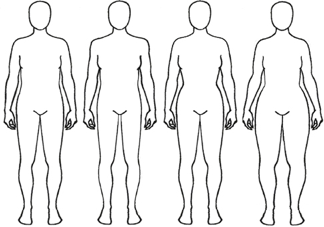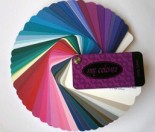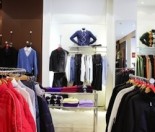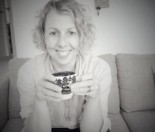‘Pear’, ‘pineapple’, ‘strawberry’, and ‘banana’ might be a great recipe for a fruit salad, but it can also be a recipe for confusion about our body image. To paraphrase Kermit the Frog: Why are there so many books about ‘Body Shapes’? How does knowing that we’re shaped like a fruit, a letter of the alphabet, or a household item help us to feel more confident and dress better?
My experience is that there are three features of Body Shape systems and descriptions that make them so appealing.
- They help us celebrate the fact that no matter how differently we are all built, we’re all equally gorgeous. (And equally challenged.)
- They can give us a name to pin our body image to, helping us to accept that some clothing that will suit us, and some won’t, and that’s ok.
- They help us see ourselves as a whole person, balancing the areas we love to loath with those that we actually quietly chuffed with. Once we know our complete body shape, we no longer look in the mirror and focus on just ‘how does my [insert diabolical body part here] look?’, but instead ‘do I look balanced and well put-together?’
Yet, like any magic recipe, there is some confusion about what the exact ingredients and methods are supposed to be.
Nearly every Body Shape system is based on four traditional silhouettes, which compare the proportions of shoulder and/or bust, waist and hips:
- Column (sometimes known as a Rectangle, an ‘I’ or ‘H’, a Banana, or a Brick); with shoulders, waist, and hips all in line.
- Triangle (sometimes known as an Inverted Triangle; a ‘T’ or ‘V’, an Apple, or a Goblet); with broad shoulders, average waist, and narrow hips.
- Hourglass (sometimes known as an ‘X’ or ‘8’, or a ‘Cello’); with narrow/average shoulders, full bust, narrow waist, and full hips.
- Pear (sometimes known as a Spoon, a Triangle, an ‘A’, or a Bell); with broad hips, small waist, and narrow shoulders.
We can each be a combination of these types at any given time, and often just as we get used to fitting into one type, our bodies get board and decide to change.
When it comes to the method for what to do with your body shape also varies. All of the variations in advice for dressing you body shape are thanks to the many different tastes throughout the fashion industry.
Some people adore hourglass silhouettes and recommend shapes and sizes should do what they can to mimic this shape. (I call this the cookie cutter approach).
Others suggest if you have a part of your body disproportionate to the rest, cover it up so it cannot be seen (e.g. long tops for pear shapes). (I call this the icing-over-burnt-cake solution.)
Finally, there is the ‘go with the flow’ approach of harmonising and balancing what you have. (This is the ‘if-you-get-lemons-make-lemonade’ answer.)
Personally I prefer ‘lemonade’.
There’s nothing wrong with mixing recipes, seasoning to taste, or adding your own secret ingredients. Colours, patterns, textures, contrasts and details like accessories can all get added to the mix. Personal style always trumps ‘the rules’.
I’m not much of a cook, so I can completely sympathise with anyone looking at these options and feeling somewhat daunted.
From all of my study of body shape recommendations, and experience helping hundreds of women dress with confidence, I have boiled down the following simple formula that works whatever your body shape(s). This is a starting point, and as your confidence grows you can add more of your own flavour.
Step 1: Hide
I don’t like focusing on this one too much – after all, we want to get on to the good stuff. However, there are a few tricks you can use to help you forget about those figure foibles.
- Use colour to blur the area you want to push to the background of your attention. For example cool colours, dark colours and soft colours appear to ‘recede’ when next to warmer, lighter, clearer colours. Texture and pattern also blur the surface and keep the eye moving to other areas.
- Make sure your clothing fits you well. Fabric pulled too tight over any part of your body will emphasise it. If you have an exceptional body shape that isn’t catered to by off-the-peg sizes, then buy to fit the broadest part of your body and have the item tailored to fit the smaller areas. (Yes, it’s inconvenient, but if you love something it’s worth making it truly your own.)
- Follow the guidelines for highlighting and harmonising, and you will automatically reduce the appearance of areas you want to hide.
A word of caution: contrary to popular myth, Black is a ‘flattening’ rather than a ‘slimming’ colour. Because it absorbs all light, it doesn’t show light and shadow and therefore reduces the appearance of lumps and bumps, but it also makes the area look heavy and bulky.
Step 2: Highlight
We all have areas that if we stop and think about, they actually bring a smile to our lips. In fact, our lips can be one of them. As can our eyes, our shoulders, our wrists… anything at all, or maybe everything! You’ll soon have a list of nominees for your daily award of most gorgeous feature.
Each day, pick your favourite feature most appropriate for the situation. E.g. if you’re going to be giving a presentation to a group of people, probably better to highlight your eyes or lips so your audience focus’ on ‘seeing’ or ‘hearing’ you; if you’re with toddlers, they’ll love your colourful socks and shoes.
- Use colour to draw attention to your favourite feature. Accessories are brilliant for this. Broaches, belts, scarves, and shoes in one of your brightest personal colours will immediately show other people that you are confident and know how to focus on the positive. If choosing accessories is one-step-too-many for your style, you can add contrasting stitching or coloured trim to items in strategic places for built-in pizzazz.
- Use shapes created by seams and edges in garments to ‘point’ to favourite areas. For example, the lapel on a jacket can be peaked to point to your shoulders, or the wrap of a dress can point to your waist.
- Add to your favourite feature by adding fabric in the form of draped necklines, puffed shoulders, peplum hems or pleated detailing.
Step 3: Harmonise
The overall aim is that people notice You, not just your fabulous figure. This step is about bringing the whole picture together.
- Go with the flow. Is your silhouette quite straight-up-and-down or are you curvy? If you’re silhouette is quite streamlined, you will look your best in tailored styles that neatly skim over you. If you’re curvy, you’ll look your best in fabrics that drape and flow gracefully around your body.
- Use low-contrast colour combinations. Dressing your upper and lower body in colours that are closely related (variations on the theme) rather than colour blocking in opposite colours, will help the observers eye travel smoothly right up the whole length of your body, making you appear taller and leaner. You can still create the ‘hide’/‘highlight’ effects with subtle variations in colour, or with accessories or splashes of colour over your base layers.
- Keep all garments and accessories in scale with your body. Look at the fit of your clothes: if you have a petite build, trends for oversize jerseys or wide leg trousers will dwarf you; if you are grand, then cropped jackets or miniskirts will potentially look like you’ve raided a smaller member of your family’s wardrobe. Look at accessories too such as jewellery, bags, and shoes.
Whatever your body shape, by Hiding, Highlighting, and Harmonising you will look well put-together, confident, and elegant (i.e. you will make it look easy).
Of course there will always be the sense that the grass is greener… the shopping easier… the latest trends more flattering… for those on the other side of the fruit bowl. The reality is that we all get our turn as the ‘flavour of the month’, we simply have to wait for our styles to be in season.
If you are interested in more ideas for dressing well, keep your eye out for future Kiwi Families E-Newsletters, where this 6-part series on “Designing your Style” will continue. Next month will feature tips on making the most of your personal style. If you missed it, you can also read last month’s article on choosing the right colours that suit you.
You can also learn more on the True Expression website, where you can sign up to receive the quarterly e-magazine, or contact Fiona with your questions about dressing to boost your appearance, personality, and lifestyle.









